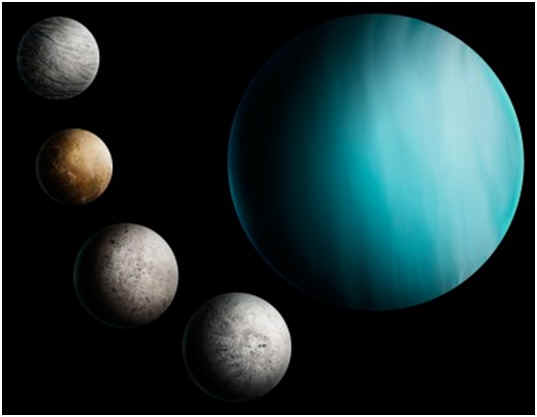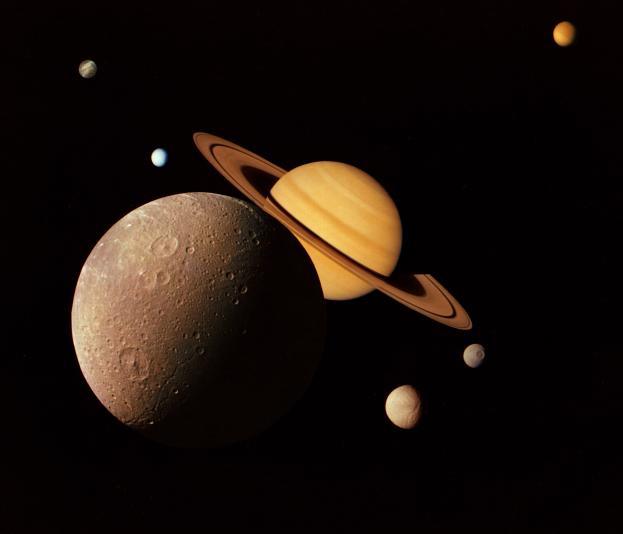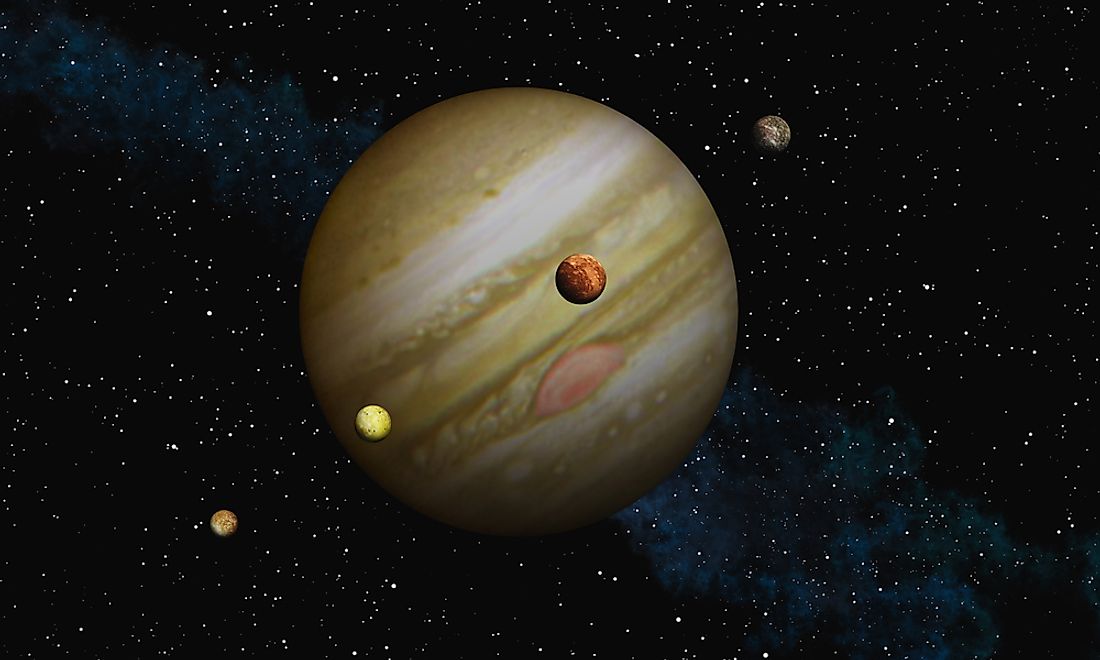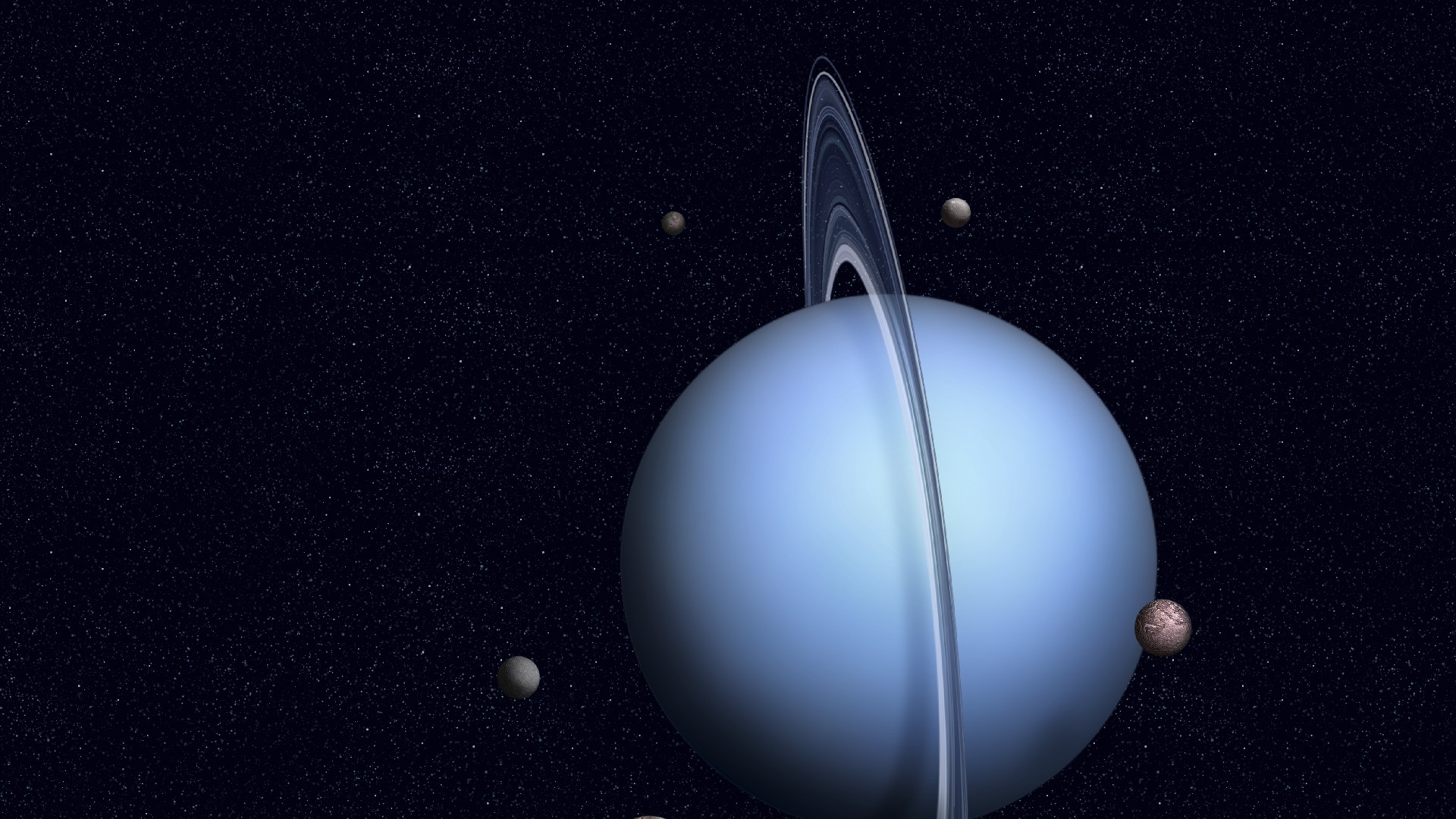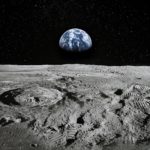The Moons of Uranus
The planet Uranus has many fascinating worlds that orbit it. There are likely still other moons of Uranus that have yet to be discovered. Since Uranus rotates on its side, its moons also rotate up and over the planet in the same direction.
|
Inner Moons Uranus has ten moons which lie closer to the planet’s surface than the other moons. We call these worlds the Inner Moons. |
|
|
Cordelia The closest moon to the surface of the planet Uranus is Cordelia. Cordelia was discovered by Voyager 2 in 1986. It appears that this moon is a shepherd moon for Uranus’ Epsilon ring. A shepherd moon is a moon that orbits a planet on the edge of its rings. By orbiting on the edge of the ring, the moon keeps the dust and ice inside of the ring, much like a shepherd keeps sheep inside a field. In Shakespeare’s play King Lear Cordelia was a daughter of King Lear. |
|
Ophelia Ophelia is the second of Uranus’ moons. This world orbits just outside the Epsilon ring, and for this reason is believed to be, like Cordelia, a shepherd moon. Ophelia, which was discovered by Voyager 2 in 1986, was named after the daughter of Polonius in Shakespeare’s Hamlet.
|
|
Bianca Bianca was discovered by Voyager 2 in 1986. It is a small icy world, and like many of Uranus’ moons, probably a captured asteroid or comet. Bianca was named after the sister of Katherine in Shakespeare’s Taming of the Shrew. |
|
Cressida The fourth of Uranus’ moons is the world Cressida. Cressida was discovered in 1986 by Voyager 2. Cressida is the daughter of Calchas in Shakespeare’s play Troilus and Cressida. |
|
Desdemona Discovered in 1986 by Voyager 2, Desdemona is the fifth of Uranus’ moons. Desdemona is the wife of Othello in Shakespeare’s Othello. |
Sorry no picture available |
Juliet Juliet is the sixth moon from the surface of Uranus, and was discovered by Voyager 2 in 1986. This moon was named after the young girl in Shakespeare’s play Romeo and Juliet. |
|
Portia Uranus’ seventh known moon is the world Portia. Portia was discovered in 1986 by Voyager 2. Portia was a rich woman in Shakespeare’s Merchant of Venice. |
Sorry no picture available |
Rosalind Rosalind is the eighth moon from the surface of the planet Uranus. It was discovered in 1986 by Voyager 2. Rosalind is a daughter of the banished Duke in Shakespeare’s play As You Like It. |
Sorry no picture available |
Belinda Discovered in 1986 by Voyager 2, Belinda is the ninth of Uranus’ moons. Belinda is named after the heroine in Alexander Pope’s The Rape of the Lock. |
|
Puck The tenth of Uranus’ moons is Puck. Puck was discovered in 1986 by Voyager 2. Puck is a fairy in Shakespeare’s Midsummer Night’s Dream. |
|
Large Moons |
|
Miranda The eleventh of Uranus’ moons is the world Miranda. Miranda is a very interesting world. It is made up half of rocky material, and half of ice. In one place Miranda has a huge cliff that is 5 km (3.1 miles) high. Miranda was discovered in 1948 by Kuiper. This icy world was named after a daughter of the magician Prospero in Shakespeare’s The Tempest. |
|
Ariel Discovered in 1851 by William Lassell, Ariel is the twelfth moon in Uranus’ system. As you can see by looking at the picture, Ariel is made up of a system of large interconnecting valleys. These valleys probably formed as Ariel froze and cracked. The smooth surface of this world tells scientists that it has been re-surfaced sometime in the recent past. Ariel was a spirit in Shakespeare’s The Tempest. |
|
Umbriel Umbriel’s heavily catered surface gives scientists a lot of information about this world. It means that Umbriel has not been resurfaced for a long time, probably since it was first formed. Re-surfacing is when the old surface of a world is covered up by a new surface. This happens on Earth by volcanic eruptions. Re-surfacing can sometimes happen if a hot object hits a world. That object might melt the surface, forming a new smoother surface in its place. |
|
Titania Discovered in 1787 by William Herschel, Titania is the largest of Uranus’ moons. It is believed that long ago Titania had a huge liquid water ocean. As Titania cooled, the surface froze over. Later as the interior froze, the surface expanded and cracked. These cracks formed the giant valleys found on Titania today. Titania is the Queen of the Fairies in Shakespeare’s Midsummer Night’s Dream. |
|
Oberon Uranus’s fifteenth moon and second largest is Oberon. Oberon was discovered in 1787 by William Herschel. Early in Oberon’s history it was a very active world, but today it is frozen solid. Oberon is about half rock, and half frozen water. Oberon is the husband to Titania and the King of the Fairies in Shakespeare’s Midsummer Night’s Dream. |
|
Other Moons The other moons of Uranus are Caliban, Stephano, Trinculo, Sycorax, Margaret, Prospero, Setebos, Mab, Pertida, Cupid, Francisco and Ferdinand. We are still learning about these worlds. |
|
